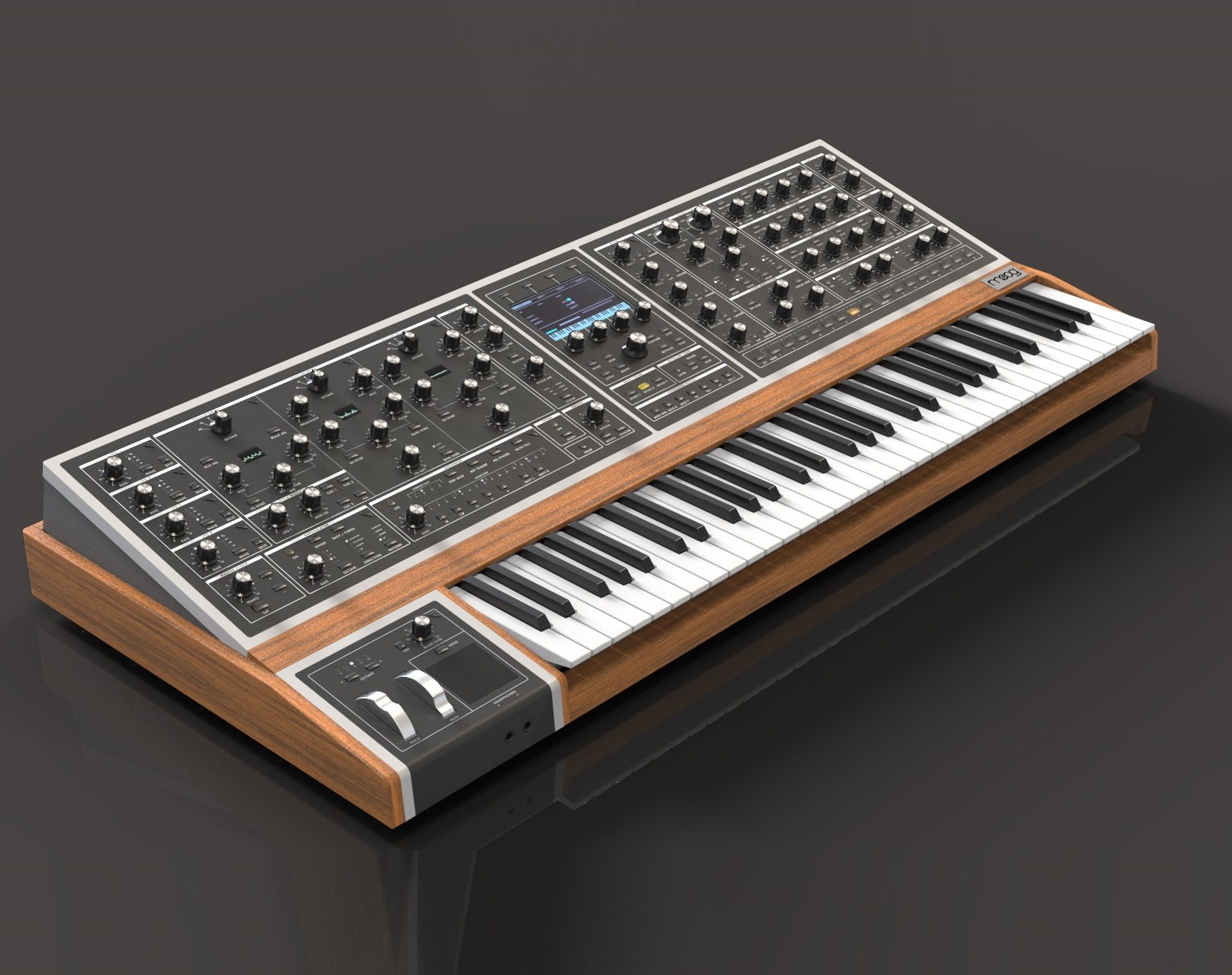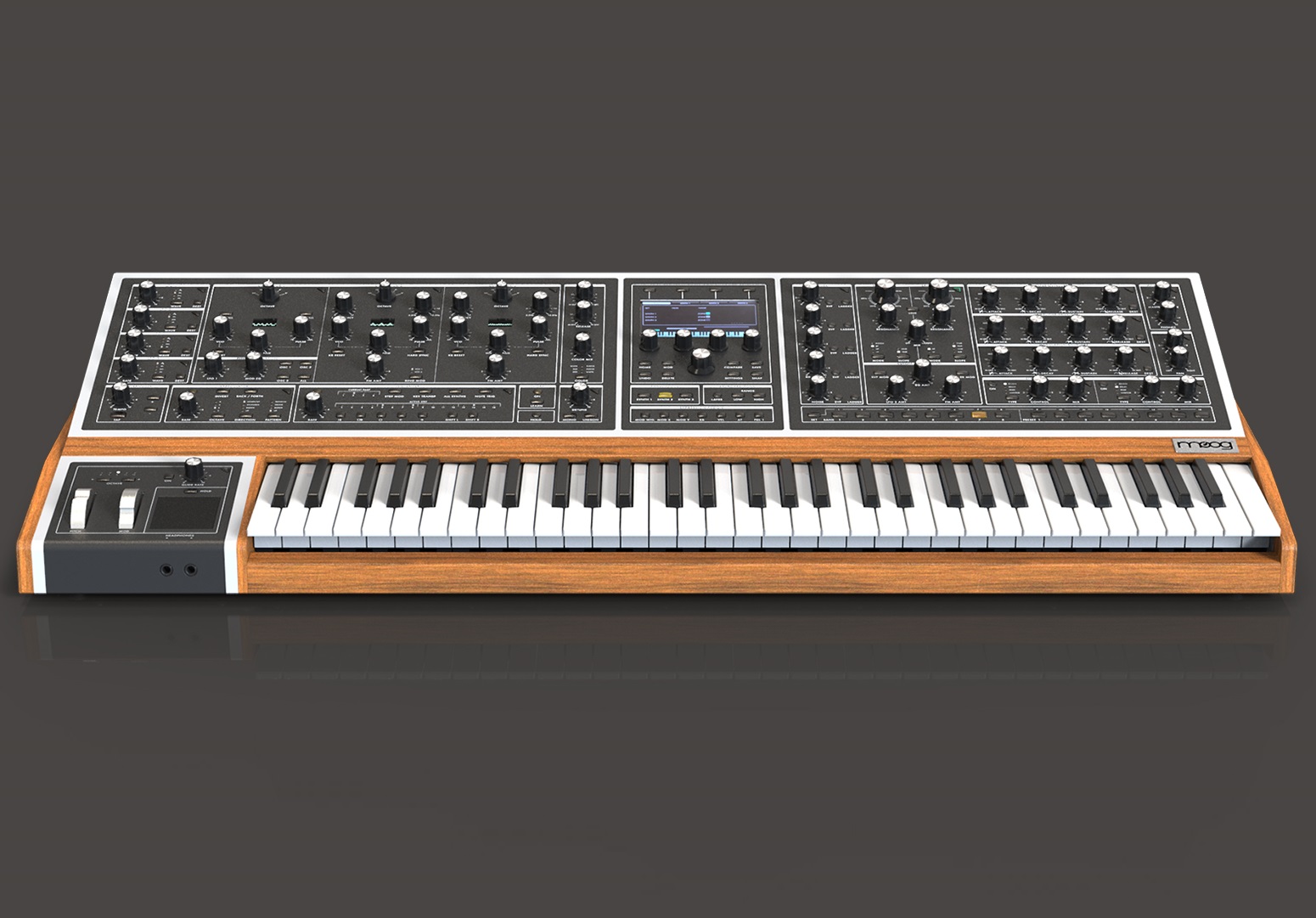Moog One
Electronic Instruments
America
Between 1901 and present
Video
The Moog One is a state-of-the-art polyphonic analog synthesizer designed and produced by Moog Music, a company renowned for its pioneering role in synthesizer development. This instrument represents the pinnacle of Moog’s craftsmanship, combining vintage analog warmth with modern digital control. It is a flagship synthesizer that offers vast sound design capabilities, making it a favorite among professional musicians, sound designers, and enthusiasts alike.
Type of Instrument: The Moog One is an electronic musical instrument, specifically an analog synthesizer. Unlike traditional acoustic instruments that generate sound through physical vibrations, synthesizers create sound electronically through oscillators, filters, and modulators. It is classified as a polyphonic synthesizer, meaning it can play multiple notes simultaneously, unlike monophonic synthesizers, which produce only one note at a time.
History
The Moog One belongs to the larger family of synthesizers, which originated in the 20th century. The development of electronic synthesizers can be traced back to the mid-1900s in North America and Europe. Dr. Robert Moog, an American engineer, played a crucial role in the evolution of synthesizers during the 1960s. His company, Moog Music, introduced the first commercially available analog synthesizers, revolutionizing the music industry. The Moog One, released in 2018, continues this legacy as one of the most advanced synthesizers Moog has ever created.
Construction
The Moog One is a meticulously crafted synthesizer with a robust and elegant design. It features a wooden chassis, a metal panel, and a premium-quality keybed with velocity and aftertouch sensitivity. The front panel is loaded with an array of knobs, buttons, and sliders, providing immediate hands-on control. The instrument includes three analog oscillators per voice, two independent filters, four LFOs, three envelopes, and a comprehensive modulation matrix. Additionally, it incorporates a digital effects section, including reverb and delay, making it a hybrid of analog and digital technologies.
Types of Moog One
While the Moog One itself is a single model, it is available in two configurations based on the number of voices: the Moog One 8 (8-voice polyphony) and the Moog One 16 (16-voice polyphony). Both versions share the same architecture and features, but the 16-voice model provides a richer harmonic structure and greater flexibility in complex compositions.
Characteristics and Features
The Moog One is distinguished by its deep programmability, warm analog sound, and extensive modulation capabilities. It features a tri-timbral engine, allowing three independent synthesizer layers to be played simultaneously. The intuitive user interface includes a high-resolution display that aids in sound design. The instrument also supports preset storage, allowing users to recall their settings instantly. Its connectivity options include MIDI, USB, and CV/Gate outputs, making it compatible with both modern digital studios and vintage analog gear.
Key Features Overview
Some key features include:
- Three analog modeling oscillators per voice.
- Dual filters (multimode filter plus state-variable filter).
- Five loopable DAHDSR envelopes.
- Five complex LFOs.
- A comprehensive 32-slot modulation matrix.
CV/Gate inputs for integration with modular systems. A notable feature is its ribbon controller which allows expressive performance control similar to Theremin playing styles.
Additional Features
Other notable features include:
- A built-in arpeggiator designed to generate complex rhythmic patterns from inputted chords
- Multiple effects such as delay types (five)
- Reverb types (four)
- Chorus
- Flanger
- Rotary speaker simulation
- Phasers
- Lo-fi distortion
- Tremolo effects
- EQ adjustments
- Distortion options
- Compressor settings
These tools enable musicians to craft everything from simple tones to elaborate textures suitable for various musical genres.
Sound Production
Sound production in the Moog One begins with its three analog voltage-controlled oscillators (VCOs), which generate the core waveforms (sine, saw, square, and triangle). These oscillators pass through two selectable filters: a classic Moog ladder filter and a state-variable filter. The sound is then shaped using envelopes and low-frequency oscillators (LFOs) before being processed through onboard effects. The result is a rich, dynamic, and expressive analog tone with an expansive sonic range.
Playing Methods
The Moog One is played using its 61-key keyboard, which supports velocity sensitivity and aftertouch for expressive performances. It can be controlled using external MIDI controllers, sequencers, or computer software. Advanced modulation and performance features, such as X/Y pad controls and assignable footswitches, enable musicians to shape sounds in real time. Additionally, the built-in arpeggiator and step sequencer add rhythmic and melodic variations to compositions.
Roles in Music
The Moog One is a versatile instrument used across various music genres. It is widely employed in electronic music, ambient soundscapes, film scoring, progressive rock, jazz fusion, and experimental compositions. Its deep synthesis capabilities make it a go-to instrument for sound designers in film, television, and video game production. Artists use the Moog One for lead melodies, bass lines, atmospheric pads, and complex evolving textures.
Cultural Significance
As part of the Moog synthesizer lineage, the Moog One carries a significant cultural legacy. Moog synthesizers have been instrumental in shaping the sound of modern music since the 1960s. They have been used by legendary artists such as Wendy Carlos, Keith Emerson, Jean-Michel Jarre, and Hans Zimmer. The Moog One continues this tradition by offering a cutting-edge tool for today’s musicians, preserving the analog warmth while integrating contemporary advancements. It stands as a testament to the enduring influence of Moog’s innovations in the world of music.
The Moog One is not just an instrument; it is a powerful creative tool that embodies the evolution of analog synthesis. With its exceptional sound quality, intricate design, and deep functionality, it remains a flagship synthesizer for those who seek the ultimate in musical expression.
FAQ
What are the key features of the Moog One synthesizer?
The Moog One is a polyphonic analog synthesizer with up to 16 voices. It features three VCOs per voice, dual analog filters, and a built-in eventide reverb. The synth has extensive modulation, a ribbon controller, and a powerful arpeggiator. Its deep architecture allows for complex sound design.
What are the different types of Moog One available?
The Moog One comes in two versions: 8-voice and 16-voice. Both models share the same core architecture but differ in polyphony. The 8-voice model is more affordable, while the 16-voice version offers richer layering and performance capabilities. Both provide deep sound sculpting with Moog's signature warmth.
What genres of music is the Moog One commonly used for?
The Moog One is widely used in electronic, ambient, progressive rock, and experimental music. Its lush polyphonic textures and deep modulation make it perfect for cinematic scores. Many synthesists use it for complex pads, evolving soundscapes, and rich leads. It’s also popular in synthwave and modern jazz fusion.
 Links
Links
References
- Moog Polyphonic Synthesizers History
- Birth Of The Moog One
- Evolution Of Moogs Synths
- Wikipedia - Development Of The Original Modular Synth By Robert A. MOOG Himself In Early Sixties USA New York Cornell University Times Indeed!
- Robomuso Review On The Amazing Journey Since Its Release Back In October '18 Till Now And Beyond Still Going Strong!
Other Instrument
Categories



















